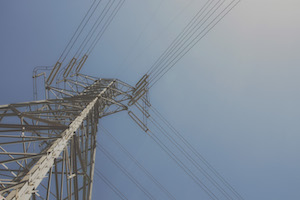The Story of Steel
1899: The American Rolling Mill Co. is created to engage in the production of rolled steel, mainly for other manufacturers to use in their own products. The company had its roots in the American Steel Roofing Co. in Cincinnati.
1901: Armco officially opens in Middletown, Ohio.
1903: Ships first order of electrical steel to Westinghouse.
1905: Joins the Cincinnati Stock Exchange. Acquires the Muskingum Valley Steel Company of Zanesville, Ohio.
1908: The future Armco Butler Works starts with the establishment of the Forged Steel Wheel Co., which produces railroad wheels, mainly for the Standard Steel Car Co. in Butler.
1910: The first open hearth furnace is built in Butler.
1911: Begins operations at the new East Works in Middletown.
1916: The Forged Steel Wheel Co. in Butler includes 10 open hearth furnaces.
1918: Begins first full year of Armco coal mining starting in Fayette County, W.Va.
1920: Adopts eight-hour work day, first in the steel business. The Forged Steel Wheel Co. plant in Butler is purchased by the Columbia Steel Co. in the early 1920s.
1921: Armco acquires Ashland Works and employee John Butler Tytus begins developing a process for producing rolled steel.
1923: The facility is dubbed Middletown Works, remains in operation into the 1990s as one of AK Steel's two principle production plants.
1924: Tytus' idea to roll steel in continuous ribbons is implemented in Ashland, Ky. The Butler Columbia Steel plant also was working on continuous rolling.
1927: Acquires the Columbia Steel Co. The Butler plant sells its equipment and patents to Armco for approximately $20 million.
1928: The Butler plant becomes known as the Columbia Division of Armco.
1930: Armco acquires the Sheffield Steel Corp. Butler Works embarks into the specialty steel market in 1930 with the production of two stainless steel coils.
1932: Produces the first stainless steel sheets to be processed by the continuous cold reduction method at Butler Works.
1933: Highway guard rail is developed by Armco.
1936: The Butler Works uses a hot dip process to establish the first continuous zinc-coating line. The plant is called the Butler Division of Armco.
1939: The Butler Works plant is the first to coat steel with aluminum.
1941: Incorporates Armco Drainage and Metal Products Inc.
1945: Acquires the Rustless Iron and Steel Corp.
1948: Changes name from The American Rolling Mill Co. to Armco Steel Corp. The Butler Works begins melting stainless steel with the introduction of No. 8 electric furnace that could hold 60 tons.
1949: Breaks ground for six open hearths at Middletown Works.
1953: Fires up a new blast furnace at Middletown Works that costs $40 million.
1957: Acquires the assets of Union Wire Rope Corp. in Kansas City, Mo.
1958: Merges with National Supply, world's largest manufacturer of oil and gas drilling and producing equipment. At Butler Works, a new hot mill is introduced.
1959: A two-year upgrade to the cold rolling department in Butler starts and a stainless steel processing plant is established on the site of the Bantam Car Co.
1964: Project 600, an extensive program meant to improve the plant, is initiated at the Butler Works. It would cost $600 million and last six years.
1967: Acquires Olympic Screw & Rivet Corp. of Downey, Calif.
1969: Acquires HITCO, a California-based manufacturer of non-metallic materials. This leads to the manufacturing of the skin of the Apollo Command Ship.
1970: The Butler Works open hearth department and the wheel works closes.
1977: The Butler Works introduces the argon oxygen decarburization process, which melts and refines steel.
1978: Armco Steel Corp. changes its name to Armco Inc., which reflects the company's non-steel holdings. The original steel mill holdings, Middletown and Ashland Works, are placed in a newly formed group called the Eastern Steel Division. The headquarters is located in Butler.
1981: The Butler Works' slab mill ceases operation.
1985: The company leaves its Ohio-based headquarters location and moves to New Jersey to serve the majority of its holdings and customers' needs.
1986: Armco announces the addition of a cold rolling mill to the Butler Works plant, which would cost $60 million. Armco continues to develop the plant into the next decade, spending $30 million to upgrade one of the continuous casters.
1989: Armco enters into a limited partnership with the Kawasaki Steel Corp. of Japan, merging portions of each company to form the Armco Steel Co., L.P.
1993: The company moves its headquarters to Pittsburgh and renames itself AK Steel Holdings, reflecting its Armco roots and investment by Kawasaki.
1994: The company becomes a public company via an initial public offering.
1995: The company moves its headquarters back to Middletown.
1999: Armco announces a merger with AK Steel for $1.3 billion.
2007: The company moves its headquarters to West Chester Township, Butler County, Ohio.
2008: The company was added to the S&P 500 Index
2011: It was removed from the S&P 500 index and added to the S&P 600 Index
2014: The company acquires steel-making assets, including a coke-making facility and interests in three joint ventures that process flat-rolled steel products in Dearborn, Mich., from Severstal for $700 million.
2017: The company acquires Precision Partners Holding Co. for $360 million.
2019: Cleveland-Cliffs, the country's largest producer of iron ore pellets, says it will acquire AK Steel for $1.1 billion in issued and outstanding shares of AK Steel stock.
SOURCES: Butler County Historical Society; “Butler County, Pennsylvania Celebrates Its Bicentennial;” Armco Steel: The American Rolling Mill Company: Success in the First Thirty Years; and Wikipedia.













